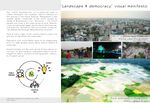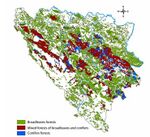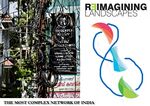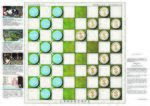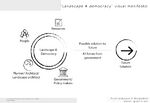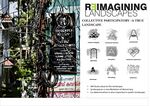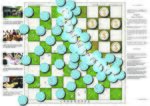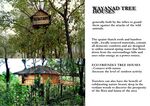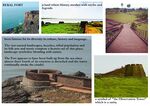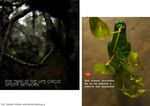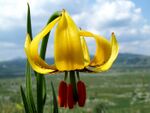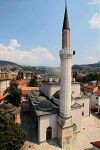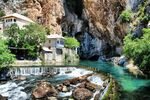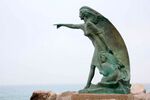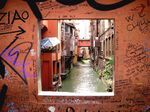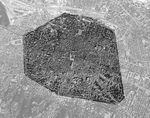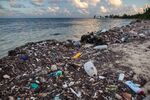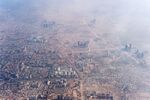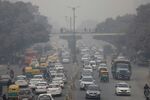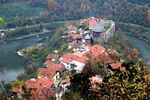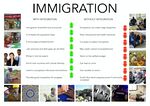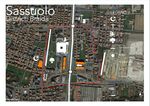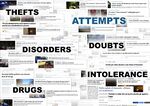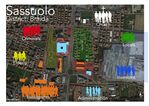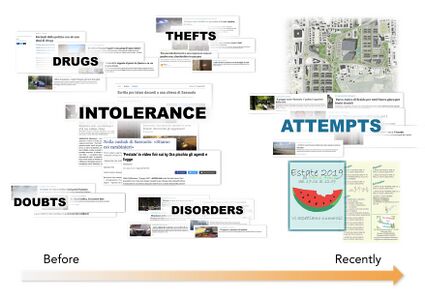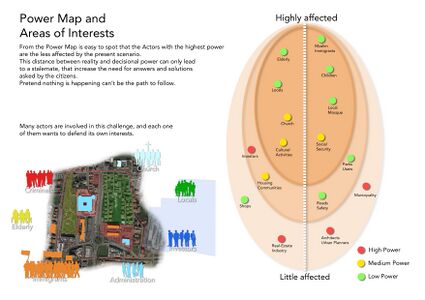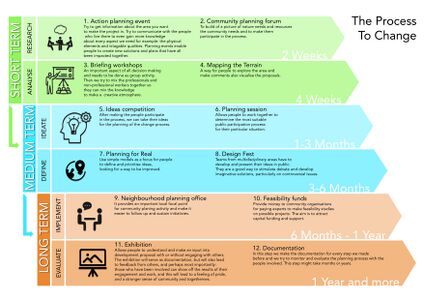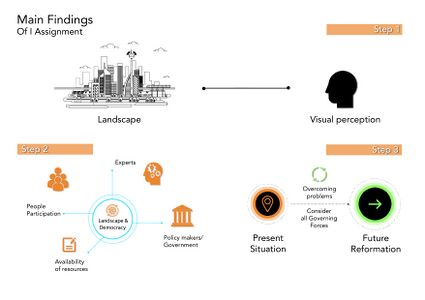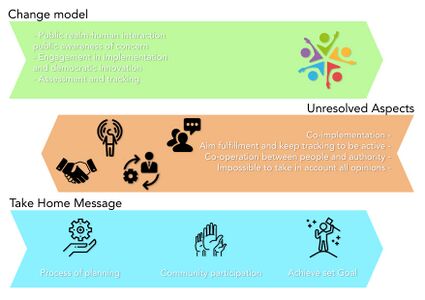LED Online Seminar 2019 - Working Group 5: Difference between revisions
Haris.pezic (talk | contribs) |
Rahat.nafiz (talk | contribs) |
||
| (33 intermediate revisions by 5 users not shown) | |||
| Line 157: | Line 157: | ||
=== Step 5: Reflection === | === Step 5: Reflection === | ||
design is about everybody getting – if not what they originally wanted – what, after working together and listening to the whole situation, they have come to want. The conception of public participation is very important in the landscape development process and Deliberate democracy is required to make people more aware of the condition to make them understand the value & interest of others. | |||
By indicating the community problems That helps us to sustain our liberty, our life culture & ecological system on which our life depends mostly.essence of placemaking tells about how it works every day & connection between community & social spaces. | |||
Any landscape is composed not only of what lies before our eyes but what lies within our heads. This leads to different ways people might describe a common scene. Evaluating Community Design, Landscape .The aim is search for enrichment, not immediate solutions to problems. | |||
=== Step 6: Revised manifestoes === | === Step 6: Revised manifestoes === | ||
| Line 165: | Line 167: | ||
<gallery caption=" " widths="150px" heights="150px" perrow="5"> | <gallery caption=" " widths="150px" heights="150px" perrow="5"> | ||
Image:Manifesto_revised_Nafiz.jpg|'''Nafiz's updated manifesto''' In conclusion, it is my perception landscape & democracy is very important to give chance to weaker part of the society as same as stronger. A good solution is not possible to execute successfully without understanding its user group & also context. Therefore, peoples opinion through & its reflection in the decision making process can move forward our development to a better future. | |||
Image:Revised_manifest.jpg|Author's updated manifesto | Image:Revised_manifest.jpg|Author's updated manifesto | ||
Image: | Image:Manifesto revised amala.jpg|'''Amala's updated manifesto''' from the previous seminar sessions, i perceived the landscape democracy values in different perspectives.public realm - human interaction and public awareness of concern is very important.Opening up to public, participation and civic actions,Decision-making-open active voting, consideration of social security, Identification of lack of services, connections, places for communities to meet. | ||
Image: | Image:conclusion_LANDSCAPE_.jpg|'''Gianmarco Gianni''' By the end of this journey I learnt that there aren’t preconceived solutions to apply in favor of the landscape. The same apparently good solutions couldn’t work in different environments. As far as I understood is not about government but governance. Decisions have to be taken, but it has to be easy for them to be revised and guided differently if needed. The authors of the change can only be people expressing their ideas, thoughts, feelings, visions as a community. If the community voice is raised and it’s given to them the power to express and take part in the process, solutions will never run out. There are many strategies to involve people and evoke interest, but there are no rules and a lot still has to be discovered. | ||
</gallery> | </gallery> | ||
| Line 211: | Line 214: | ||
=== Landscape Democracy Challenge 1 (Nafiz Rahat) === | === Landscape Democracy Challenge 1 (Nafiz Rahat) === | ||
<gallery caption="Plastic ocean & environmental challenges" widths="150px" heights="150px" perrow="5"> | <gallery caption="Plastic ocean & environmental challenges" widths="150px" heights="150px" perrow="5"> | ||
Image:1 Plastic ocean pollution.jpg|caption: ‘Plastic ocean’ symbolic two words depict vast issue in contemporary world.Recently many research is showing plastic pollution is spreading fluently day by day. | Image:1 Plastic ocean pollution.jpg|caption: ‘Plastic ocean’ symbolic two words depict vast issue in contemporary world.I have presented the situation in California, USA based on some research. Recently many research is showing plastic pollution is spreading fluently day by day. | ||
Image:2 Plastic pollution.jpg|caption: The amount of plastic is being dumped into the ocean is creating a disastrous situation in sea life, make injuries to water life, increasing toxic & also generating threat to human health. Research in the University of California 2015 Shows Ocean contains more plastic waste than ever believed. | Image:2 Plastic pollution.jpg|caption: The amount of plastic is being dumped into the ocean is creating a disastrous situation in sea life, make injuries to water life, increasing toxic & also generating threat to human health. Research in the University of California 2015 Shows Ocean contains more plastic waste than ever believed. | ||
Image:Stock-photo-plastic-ocean-fish-among-plastic-bags-polluting-the-sea-microplastics-contaminate-seafood-1099903547.jpg|caption: It is presumed that the ocean contains more than 150 million tons of plastic. In USA top 10 types of plastic items collected from river & ocean like cigarette butts, plastic beverage bottles, food wrappers, bottle caps, straws, other plastic bags, glass beverage bottles. It is a matter that only 14% of plastic packaging is recycled. More than 90% of plastic packaging is lost its value after the first use. | Image:Stock-photo-plastic-ocean-fish-among-plastic-bags-polluting-the-sea-microplastics-contaminate-seafood-1099903547.jpg|caption: It is presumed that the ocean contains more than 150 million tons of plastic. In USA top 10 types of plastic items collected from river & ocean like cigarette butts, plastic beverage bottles, food wrappers, bottle caps, straws, other plastic bags, glass beverage bottles. It is a matter that only 14% of plastic packaging is recycled. More than 90% of plastic packaging is lost its value after the first use. | ||
| Line 236: | Line 239: | ||
=== Landscape Democracy Challenge 3 (Haris) === | === Landscape Democracy Challenge 3 (Haris) === | ||
<gallery caption="Hydro power plant Vranduk - Zenica" widths="150px" heights="150px" perrow="5"> | <gallery caption="Hydro power plant Vranduk - Zenica" widths="150px" heights="150px" perrow="5"> | ||
Image: | Image:Haris111.jpg|caption: The hydroelectric power plant is a plant in which the potential energy of water flows first into the kinetic energy of its flow, then into the mechanical energy of the turbine shaft rotation and ultimately into the electric energy in the electric generator. One of these will be done in Vranduk. The concept of construction of HPP Vranduk, with its structure and coverage, enters the protected natural and environmental spatial environment of the Old Town of Vranduk, where no investigations of any kind can be carried out, nor preparatory or construction works. | ||
Image: | Image:Haris22.jpg|caption:HPP is the plant that most destroys river ecology and biodiversity, and that is irreversible process. They prevent the continuity of living space for fish and other species along the river because they stop the migration and reproduction of fish and other species. By flooding the river stream upstream from the HPP habitats and populations are completely destroyed. Species adapted to life in river which with change of habitats from free flowing river to the artificial lake meet completely new living conditions that can hardly adapt. | ||
Image:Haris33.jpg|caption:There will be an increase in CO2 and methane. It has a negative impact on the health of local population who use fish from that river in their diet. They also influence water temperature change, sediment transfer regime change, and connection to surrounding surface and groundwater is prevented. It directly affects biodiversity and landscape. | |||
irreversible | Image:Haris11.jpg|caption:The main participants are people who look only for their own benefit and who do not care about the consequences that can happen. There are also some important changes that their decisions will bring. It has a major impact on the microclimate of the area. Airflow arrests and temperature changes. It directly reflects on lives of people and the ecosystem. This increases the risk of pathogenicity and the appearance of new species that have not been present before. | ||
Image: | |||
Image: | |||
</gallery> | </gallery> | ||
'''Your references:''' | '''Your references:''' | ||
=== Landscape Democracy Challenge 4 === | |||
<gallery caption=" | *http://s3-eu-west-1.amazonaws.com/zelena-akcija.production/zelena_akcija/document_translations/480/doc_files/original/ZA_Stav_Koliko_su_hidroelektrane_zapravo_zelene_20071221.pdf?1270310266 | ||
Image: | *https://ba.ekapija.com/news/1847730/trazi-se-rjesenja-za-he-vranduk-strabag-nudi-nagodbu-elektroprivreda-bih-pregovara | ||
Image: | |||
Image: | === Landscape Democracy Challenge 4 (Gianmarco)=== | ||
Image: | <gallery caption="Hybrid Braida" widths="150px" heights="150px" perrow="5"> | ||
Image:Immigration.jpg|caption: The challenge I chose is concerned with Immigration. This topic has raised in the recent years and it’s affecting politics, economy and public opinion all over Europe and more in general the occidental world. Is important to think about it without an easy sense of compassion and analyse this phenomenon. In my opinion it can’t be considered a problem itself, in any case, but it has to be regulated and supported by Integration politics. We can all agree that this streams of people can bring benefits for everyone if well managed, otherwise the potential risk is the growth of social cancers, such as crime or racism… | |||
Image:Braida1.jpg|caption: The challenge take place in Sassuolo, northern Italy in a district called Braida.Unfortunately, Braida in the past years has become famous for its criminal activities. Sassuolo is well known for the Ceramic Industry and Braida, which is nearby was a bargain place to look for a home. Due to this reason, many workers from all over Italy and later on the world moved there. By the time Ceramic industry was still rising no problems were raised, but as soon as the market started to slow down, the district itself and the neighbourhoods were quickly full of unemployed people. The rent prices dropped down, making this old and damaged flats attractive for new communities looking for a place to live. Nowadays this new community is mainly composed by Muslims that aren’t well integrated yet. They are often seen as a problem especially by the elderly locals, whom feel like it’s not safe anymore to live there. On top of this situation the landscape balance is undermined by infrastructural barriers which prevent continuity through the district. In fact, Braida is crossed by a very busy road that basically splits Braida in two halves. There aren’t any facilities to cross the road and pedestrian paths are really poor. Another delicate matter is the area to the East just outside the district. As I mentioned before, the economic crisis closed many Ceramic Industries, but leaving opportunity of expansion to the left ones: Cisa Cerdisa(the name of the company) is one of Them. In 2013 Cisa Cerdisa moves outside the city centre, living behind a vast area that still needs to be reclaimed. | |||
Image:news.jpg|caption: As you can see from all this news collected mainly from “Modena Today”, in Braida there are many open issues concerning: Doubts about the EX Cisa Cerdisa Area, Abandoned Houses that are a fertile ground for stragglers and drug dealers, Thefts, Intolerance and the subsequent outbreak of violence from both parts. Only few attempts had been made to improve the situation: New projects, Urban regeneration, Parish activities,Community gardens. But I think that a lot still has to be done. | |||
Image:actorsbraida.jpg|caption: Many actors are involved in this challenge, and each one of them wants to defend its own interests: Criminals, Elderly, Immigrants, Church, Locals, Administration, Investors. A Democratic coexistence between all parts should be the aim. Decision concerning the Landscape may bring a bit more of democracy and with time overcome inequalities. | |||
</gallery> | </gallery> | ||
'''Your references:''' | '''Your references:''' | ||
*.. | *http://www.modenatoday.it/ | ||
== Your Democratic Change Process == | |||
<gallery caption=" | <gallery caption="Hybrid Braida" widths="600px" heights="300px" perrow="1"> | ||
Image: | Image:Braida.jpg| Our challenge is situated in Braida, a small neighborhood in the district of Sassuolo (Modena) Northern Italy. | ||
Image: | Image:Braida_news.jpg| Immigration, economy crisis and general abandon raised many social problems. Only little has done recently, still a lot is left to do. | ||
Image: | Image:Braida_PowerMap.jpg| Power Map and main actors | ||
Image: | Image:Braida_Change.jpg|The process to change | ||
Image:Main_findings_5.jpg|Main findings of assignment 1 | |||
Image:Braida slide 6.jpg|Overall reflection and outlook | |||
</gallery> | </gallery> | ||
== Reflection == | |||
* .... | * .... | ||
* .... | * .... | ||
| Line 278: | Line 284: | ||
* .... | * .... | ||
== Your references == | |||
* .. | * http://www.modenatoday.it | ||
* | * Why Control Immigration?: Strategic Uses of Migration Management in Russia – March 25, 2018, by Caress Schenk | ||
* | * The Community Planning Handbook: How people can shape their cities, towns & villages in any part of world - Nick Wates | ||
---- | ---- | ||
[[Category:Landscape Democracy Working Group 2019]] | [[Category:Landscape Democracy Working Group 2019]] | ||
Latest revision as of 21:46, 12 July 2019
--> Back to working group overview
Dear working group members. This is your group page and you will be completing the template gradually as we move through the seminar. Good luck and enjoy your collaboration!
Assignment 1 - Reading and Synthesizing Core Terminology
- You can read more details about this assignment here
- Readings are accessible via the resources page
Step 1: Your Landscape Democracy Manifestoes
Step 2: Define your readings
- Please add your readings selection for the terminology exercise before April 24:
A: Landscape and Democracy
Meinig, D. W. (1979): "The Beholding Eye: Ten Versions of the Same Scene." In: The Interpretation of Ordinary Landscapes: Geographical Essays, edited by D. W. Meinig and John Brinckerhoff Jackson, 33-48. New York: Oxford University Press. [Gianmarco]
Lynch, Kevin. (1960): The Image of the City, Cambridge, Mass.: MIT Press. [Amala]
Sieverts, Thomas (2003): Cities without cities. An interpretation of the Zwischenstadt [Haris Pezic]
B: Concepts of Participation
Hester, Randolph (2012): Evaluating Community Design, Landscape Journal [Gianmarco]
Day, Christopher (2002): Consensus Design, Architectural Press [Amala]
Sanoff, Henry (2014): Multiple Views of Participatory Design, Focus [Nafiz Rahat]
C: Community and Identity
Hester, Randolph (2006): Design for Ecological Democracy, The MIT Press [Nafiz Rahat]
Gafford, Farrah D. (2013): It Was a Real Village: Community Identity Formation Among Black Middle-Class Residents in Pontchartrain Park [Haris Pezic]
D: Designing
Smith, Nicola Dawn(2012): Design Charrette: A Vehicle for Consultation or Collaboration [Gianmarco]
Pritzker Prize winning architect Alejandro Aravena on sustainable design and community involvement in Chile [Amala]
Massachusetts Institute of Technology (2013): Places in the Making: How Placemaking Builds Places and Communities [Nafiz Rahat]
Ruggeri, Deni (2004): Crafting Westport [Haris Pezic]
E: Communicating a Vision
Steps 3 and 4: Concepts Selection and definition
- Each group member selects three relevant concepts derived from his/her readings and synthesize them/publish them on the wiki by May 15, 2019
- Group members reflect within their groups and define their chosen concepts into a shared definition to be posted on the wiki by June 12, 2019.
- Other group members will be able to comment on the definitions until June 30, 2019
- Each group will also report on their process to come to a set of shared definitions of key landscape democracy concepts on the wiki documentation until July 12, 2019
Concepts and definitions
Author 1: AMALA
- The book “ Image of the city”: by KEVIN LYNCH:The book consider the visual quality of American city by studying the mental image of that city which is held by its citizens.it concentrate especially on “ legibility “ of the cityscape: which is easily identifiable and are easily grouped.”building the Image” : the formal types of image elements into which we can conveniently divide the city image: path, landmark, edge, node, and district.” “Structure and identity”: an environmental image analysed into 3 components- identity , structure and meaning.” Imageability”.Analysis made of central areas of 3 american cities: boston, masaccuchussets;Jersey city, new jersey, los angeles, California.these casestudies are more about the character and structure of the urban image.The city image and its elements: edge, node, path, district, landmark.Analysis examples: beacon hill,scollay square.
- CONSENSUS VERSUS DEMOCRACY: definition of consensus is ‘general agreement; collective opinion [Latin = agreement (as consent)]’. Consensus design is about everybody getting – if not what they originally wanted – what, after working together and listening to the whole situation, they have come to want. In design, the ‘whole situation’ includes both buildings, the place where they’ll be and the people who will use them. Consensus is not an automatic state. We may start with full agreement on major aims, but over details this is rare. Buildings are built out of details. this is much fairer, more constructive and more conscious – so more fully involving – than voting- and this is the reason for preferring consensus to democracy. Reaching decisions: democratic or consensual routes.states of the questions such as Which level to start at?Existing situation: sequence of levels for consensus appraisal.Design stage: sequence of levels for consensus decisions.
- Alejandro Aravena:THE DESIGN POWER OF SYNTHESIS- the architectural philosophy- Bringing the community into the process.If there is any power in design it’s the power of synthesis.the more complex the problem the more the need for simplicity.three cases that apply here: 1: cities : the global challenge of urbanisation.3S-scale-to channel peoples own building capacity..scarcity and speed.solution of participatory design process: initial social housing by including the families: with the example of chile.two major things to do: joint forces and split tasks: different designs with the same principle.2:how design can contribute to sustainability.example of angeline innovation centre.3: how design can provide more comprehensive answers against natural disasters.example: chile-tsunami-First alternative is forbid installation on ground zero.Second alternative is build a big wall-heavy infrastructure to resist energy of the waves.the participatory design is –all about the future of the city.alternative was valid politically and socially.Second problem is flood-approach was against geographical threat.Design power of synthesis is trying to make a more efficient use of the scarciest resourses in the cities which is not money but coordination.its just an attempt to put at the innermost core of architecture, the force of life.
Author 2: Nafiz Rahat
- Concepts of Participation
Sanoff, Henry (2014): Multiple Views of Participatory Design, Focus [Nafiz Rahat] The conception of public participation how it was started in 1960 in the USA in the landscape development process. Deliberate democracy is required to make people more aware of the condition to make them understand the value & interest of others. Multiple views of participatory is to bring the planners, architects, and general public & policymakers on the same platform to create a ‘co-design’. "Participation" objective is to conceptualizing the issues with all groups & analyzing the public reaction to proposed action policies. At the next step, it is necessary to move forward to develop strategic planning & visioning. 1. Setting goals 2 taking action 3. Evaluate result 4. Improved quality decision. Finally, a consensus is very important to implement all these decisions into reality.
- Community and Identity
Hester, Randolph (2006): Design for Ecological Democracy, The MIT Press [Nafiz Rahat] Design for democracy is building an ecological democracy through the design process. It is about to remake American cities, know the American neighbors & indicate the community problems That helps us to sustain our liberty, our life culture & ecological system on which our life depends mostly. Ecological democracy is the best possible we can achieve through the combination of democracy & ecology. We have enabled the form to know our neighbors & resilient form to life, liberty & sustainable happiness. The design process must follow some ideas centeredness, connectedness, fairness, accessibility & sensible status seeking.
- Designing
Massachusetts Institute of Technology (2013): Places in the Making: How Placemaking Builds Places and Communities [Nafiz Rahat] Placemaking represents the identity of the local community depicting tangible & intangible heritage. We can learn from the essence of placemaking how to design a public space considering our previous experiences, how it works every day & connection between community & social spaces. “Placemaking is an act of doing something. It’s not planning, it’s doing. That’s what’s so powerful about it.” Fred Kent, Project for Public Spaces
Author 3: Haris Pezic
A: Landscape and Democracy
Sieverts, Thomas (2003): Cities without cities. An interpretation of the Zwischenstadt
This book tells us about the connection between diffusion and fragmentation of settlements and the process of globalization. Expressions such as the edge of the city, urban expansion, urban, urban territory, landscape city were used as a description of the phenomenon which, from the first cases of industrialization to today, gradually expanded to the point of undermining the idea of the city itself. The most common terms in the book, urban landscape or urbanized landscape appear as conceptual keys through which the author invites us to see the complexity of social, economic and production dynamics as the decisive factors of current patterns of settlement change. We can still conclude that the future of Europe and the world depends on a local and global connection that must be well connected.
C: Community and Identity
Gafford, Farrah D. (2013): It Was a Real Village: Community Identity Formation Among Black Middle-Class Residents in Pontchartrain Park
Upon completion of the Second World War in southern US cities, middle class members began their lives in family homes. Scientists have been investigating the process of division into that class. Residents in Pontchartrain Park have created a community environment. The research continued on the people who built this phenomenon and it was founded on previous experiences with the enemies. Long-term communal ties also played a key role in the recovery of the neighborhood after Katrine.
D: Designing
Ruggeri, Deni (2004): Crafting Westpor
This book discusses a permanent participatory construction in a small coastal community in Westport, California, May 2003. The basic information on the identity of its people and places is opened, followed by a detailed discussion of the methods and results used during the process of developing a new city center. While the Westport community, in many ways, representative of other similar sizes and places, its specificities have led to unique results with regard to the methodology used and the design outcomes. The community's development needs and their changing attitude, functional relationships, and views are included in a design that is carefully crafted, tailored and calibrated throughout the process. Moreover, the effects of a highly recognizable physical environment on spatial perceptions of inhabitants have resulted in sophisticated design solutions. In addition, the way of life in an estuary defined the need for a flexible process that concerned the distance of the community and the limited resources.
Author 4: Gianmarco Gianni
- A: Landscape and Democracy - Mapping the Terrain
[1]Meinig, D. W. (1979): "The Beholding Eye: Ten Versions of the Same Scene." In: The Interpretation of Ordinary Landscapes: Geographical Essays, edited by D. W. Meinig and John Brinckerhoff Jackson, 33-48. New York: Oxford University Press.
Any landscape is composed not only of what lies before our eyes but what lies within our heads. This leads to different ways people might describe a common scene. For those of us who are convinced that landscapes mirror and landscapes matter, that they tell us much about the values we hold and at the same time affect the quality of the lives we lead there is ever the need for wider conversations about ideas and impressions and concerns relating to the landscapes we share.
- B: Concepts of Participation
[2]Hester, Randolph (2012): Evaluating Community Design, Landscape Journal
The article describe Larry Halprin approach to participatory process. The core for participatory process, are “Scores”(in term of music). The architect is a composer who activated all the senses, not just the intellect. The aim is search for enrichment, not immediate solutions to problems. It’s pursued through awareness walk during which he directed participants to sense the site being designed and to consider their feelings about the place. Scores made participants more creative and their creative ideas elevate architect design. The second step is “Performance”. Is expected the performance to reveal hidden symbols and form we only see in our dreams. (Archetypal emotive space) It is one thing to ask citizens what they want to do in a park and another to ask how they feel about the park. To Halprin, sense of community was based in the primitive tribe. “Collective creativity” means to synthesize into a whole greater than the sum of the parts. To perform this the designer need extended time to develop and maintain a big, informed, and nuanced vision while continuously breaking down bigness into projects to be implemented, since time encourages moving back and forth between micro and macro scales. This approach doesn’t involve conflict mediation which usually leads to compromise and outcomes that meet no one’s expectations. This process is not bounded by goals and not manipulative since goal-setting is seen as a barrier to opening new avenues of awareness. Is proved that shared experience of scored collective creativity usually overcame conflict. Of course, some participatory methods do some of these better than others, but every one serves democracy better than exclusionary decision-making.
- D: Designing
[3]Smith, Nicola Dawn(2012): Design Charrette: A Vehicle for Consultation or Collaboration.
The word charrette is thought to originate from the word for cart in French, ‘le chariot’, with specific reference to a push cart that travelled the streets of 19th century Paris collecting the student artwork and architectural illustrations. The term charrette has been used since then to indicate a period of intense last minute work towards a design presentation deadline, and remains almost exclusively associated with the disciplines of architecture and planning. The main intention for organising a charrette is to compress the time taken to consult with various stakeholders, especially in the current climate of urgency and instant data exchange. The relative transparency created through bringing the key stakeholders together at one time, in one place, allows for open and constructive discussion, shared project understanding and sense of ownership.
Step 5: Reflection
design is about everybody getting – if not what they originally wanted – what, after working together and listening to the whole situation, they have come to want. The conception of public participation is very important in the landscape development process and Deliberate democracy is required to make people more aware of the condition to make them understand the value & interest of others.
By indicating the community problems That helps us to sustain our liberty, our life culture & ecological system on which our life depends mostly.essence of placemaking tells about how it works every day & connection between community & social spaces.
Any landscape is composed not only of what lies before our eyes but what lies within our heads. This leads to different ways people might describe a common scene. Evaluating Community Design, Landscape .The aim is search for enrichment, not immediate solutions to problems.
Step 6: Revised manifestoes
- please look again at your initial manifestoes and update them with any new aspects/prespectives you have taken up during this seminar
Nafiz's updated manifesto In conclusion, it is my perception landscape & democracy is very important to give chance to weaker part of the society as same as stronger. A good solution is not possible to execute successfully without understanding its user group & also context. Therefore, peoples opinion through & its reflection in the decision making process can move forward our development to a better future.
Amala's updated manifesto from the previous seminar sessions, i perceived the landscape democracy values in different perspectives.public realm - human interaction and public awareness of concern is very important.Opening up to public, participation and civic actions,Decision-making-open active voting, consideration of social security, Identification of lack of services, connections, places for communities to meet.
Gianmarco Gianni By the end of this journey I learnt that there aren’t preconceived solutions to apply in favor of the landscape. The same apparently good solutions couldn’t work in different environments. As far as I understood is not about government but governance. Decisions have to be taken, but it has to be easy for them to be revised and guided differently if needed. The authors of the change can only be people expressing their ideas, thoughts, feelings, visions as a community. If the community voice is raised and it’s given to them the power to express and take part in the process, solutions will never run out. There are many strategies to involve people and evoke interest, but there are no rules and a lot still has to be discovered.
Assignment 2 - Your Landscape Symbols
- You can read more details about this assignment here
Landscape Symbols Author 1: Nafiz Rahat
Hadis Park, Khulna, Bangladesh One of the historical park in Khulna city Bangladesh. In 1925 Mahatma Gandhi gave his speech in this park.Later after independence this park became unused, dirty place & a zone of criminal activity day by day. In 2011, Khulna City Corporation (KCC) took innitiative steps to intervene in the park based on the demand of Khulna city people.
Solar Park, Khulna, Bangladesh. Which is also a good example of successful urban public space. People are coming frequently to pass their time & walk through the waterfront.Geo-Location: https://goo.gl/maps/9Ls4cSLUyMNfpbzT8
United nation park in Khulna Bangladesh. Last intervention has turned the park into successful urban public space. A landscape should belong to all walk of people. This is one of the examples. Geo-Location: https://goo.gl/maps/rZkkfbhCUhC4G3ui8
Landscape Symbols Author 2: AMALA
WAYANAD TREE HOUSES:generally built by the tribes to guard them against the attacks of the wild animals.The quaint thatch roofs and bamboo walls , locally sourced materials, contain all domestic comforts and are designed to utilize natural spring water that flows down from the surroundings hills and uses solar energy as a power source.ECO FRIENDLY TREE HOUSES:Connect with nature.Increase the level of outdoor activity.Travelers can also have the benefit of exhilarating nature beauty deep in the verdant woods to discover the prosperity of the flora and fauna of the area
BEKAL FORT:a symbol of "the Observation Tower" which is a rarity.It was an important military station for TIPU SULTHAN-the king and a land where history meshes with myths and legends-been famous for its diversity in culture, history and language.The vast natural landscapes, beaches, tribal population and its folk arts and music compose a heaven out of this place. landscape symbolise blending with nature.The Fort appears to have been built up from the sea since almost three fourth of its exteriors is drenched and the waves continually stroke the citadel.
LIFE CIRCLES IN CONNECTION WITH NATURE:pic1:The twig is the lifecircle of spider network. the spider creates the web in attached with the barks of the tree.its a natural landscape sysmbol well connected with the nature which indicates livelihood for the species of flora and fauna.pic2:the interior landscape picture shows the money plant in the green bottle murmering sounds like " she always provokes me to be seated and admire her presence.both the pics symbolise the correlation of nature and its elements.
Landscape Symbols Author 3: Haris
Lilium bosniacum:Lilium bosniacum is native symbol of Bosnia and Herzegovina. You can find it like picture on money, stamps, flags, etc. King Tvrtko I Kotromanic made him popular when Bosnia was the most powerful state in Balkans. It is also used as a flowering species because you can find a lot of variations, colors and shapes.
Gianmarco Gianni
FISHERMAN WIFE - (44°04'54.6"N 12°34'36.2"E) In Rimini is possible to find this statue made of bronze, placed at the tip of the dock facing the open sea. The statue represent a woman with children on the shore waiting for her husband fishing in the sea. The scene is drammatic.The woman is aiming a point on the horizon trying to figure out where the husband fishing boat is, probably hoping to to see him coming back safely to the port. Till the XIX century this kind of risks were a big concern for families, in fact the sails of the fishing boats were all different from each other in order to make them recognizable from the shore. Each boat had its own particular sign on the sail, smartphones and GPS weren’t available back then. Fishing had always been part of Rimini's culture since it's on the coast, but in the last years it started losing its identity because of massive tourism from all over Europe. This sculpture wants to remember us our past, our origins, the respect for tough jobs such as fishing and most of all the respect for the sea as a force of nature and as a resource.FISHERMAN WIFE
FINESTRELLA DI VIA PIELLA - (44°29'54.8"N 11°20'43.1"E)The Finestrella from Bologna can be considered as a symbol because it gives us a view from the past and remember us that we should preserve our environment and cultural background against an easy and irresponsible progress. Bologna between the XIII and XVII century was famous for the production of fabrics made of silk and had 15 watermills that were providing energy to move the mules. These watermills were powered by many rivers passing through the city. The city should’ve looked like an inland Venice. During the ‘50s the local administration decided to cover all the rivers and to release wastewater into them in the name of a quick progress. Since that moment Bologna changed completely its aspect. Only in 1998 the local administration started a new project with the intent to regain that lost beauty. The river we can see through the window is the Fiume Reno that was uncovered and cleaned from the dirt. Moreover the small window was placed to create an inspiring point of view and to give the sense of what it should’ve been.FINESTRELLA DI VIA PIELLA
BOLOGNA’S URBAN FABRIC - (44°29'37.9"N 11°20'33.8"E) Bologna itself and its urban fabric can be considered as a landscape symbol because, despite its monuments and so on, the main aspect that makes Bologna stand in the comparison with other cities is its urban planning. The will to preserve its medieval pattern throughout the centuries had always been part of citizens sensibilities. This includes materials, colours and many other features. Meanwhile in Europe at the end of the XIX century was developing a sense of discard to the past urban set up, Bologna instead found its own way to renew itself respecting its origins. The best way to experience Bologna in fact is to take a walk around the city center, enjoy its porches and be amazed by the continuity of its glimpses despite built in different periods.BOLOGNA’S URBAN FABRIC
Assignment 4 - Your Landscape Democracy Challenge
- You can read more details about this assignment here
- Each group member will specify a landscape democracy challenge in his/her environment
Landscape Democracy Challenge 1 (Nafiz Rahat)
- Plastic ocean & environmental challenges
caption: The amount of plastic is being dumped into the ocean is creating a disastrous situation in sea life, make injuries to water life, increasing toxic & also generating threat to human health. Research in the University of California 2015 Shows Ocean contains more plastic waste than ever believed.
caption: It is presumed that the ocean contains more than 150 million tons of plastic. In USA top 10 types of plastic items collected from river & ocean like cigarette butts, plastic beverage bottles, food wrappers, bottle caps, straws, other plastic bags, glass beverage bottles. It is a matter that only 14% of plastic packaging is recycled. More than 90% of plastic packaging is lost its value after the first use.
references:
- edition.cnn.com/2019/04/16/health/ocean-plastic-study-scn/index.html
- www.asyousow.org/our-work/waste/ocean-plastics
- www.mnn.com/earth-matters/wilderness-resources/blogs/ocean-plastic-rivers
Landscape Democracy Challenge 2 (Amala)
- Automobiles Environmental Impacts in the capital city of India:DELHI
caption: the cities with the lowest levels of urban air quality in the world lie in India. Delhi ranks as the worst globally for the highest measurement of fine particulate matter This scale of air pollution in Delhi, and the fact that it is among the top ten most polluted cities in the world. there are several contributory sources of air pollution in the region, pollution levels remain at critical levels to a considerable extent due to geographic and meteorological conditions.
caption: As the air quality of Delhi continues to deteriorate and the AQI level rises exponentially, doctors get more concerned over its health impact leading to serious implications, especially for people suffering from respiratory disorders. Pollution from vehicular traffic, in particular, release gases which directly affect the growth of the fetus.
caption: pollution in cities not only has a detrimental impact on humans but also affects plants and insects .insects feeding on these leaves grew poorly, which suggests high levels of air pollution may be having cascading negative effects on communities of herbivorous creatures. "Nitrogen dioxide is a pollutant that causes severe health problems in humans, but our research has found that it may also be having a significant impact on plants and insects. Insects are a crucial part of nature and the world we live in. Insects are critical to the healthy functioning of ecosystems.man as the actor is the main cause for this.?
Your references:
- https://www.unenvironment.org/news-and-stories/story/vision-tackle-delhis-dirty-air
- https://www.dnaindia.com/delhi/report-dna-in-depth-air-pollution-causing-severe-health-impact-affecting-fetal-growth-says-doctors-2674822
- https://www.mapsofindia.com/my-india/cities/delhi-tops-in-pollution-how-can-it-be-controlled
- https://sciencing.com/effects-car-pollutants-environment-23581.html
Landscape Democracy Challenge 3 (Haris)
- Hydro power plant Vranduk - Zenica
caption: The hydroelectric power plant is a plant in which the potential energy of water flows first into the kinetic energy of its flow, then into the mechanical energy of the turbine shaft rotation and ultimately into the electric energy in the electric generator. One of these will be done in Vranduk. The concept of construction of HPP Vranduk, with its structure and coverage, enters the protected natural and environmental spatial environment of the Old Town of Vranduk, where no investigations of any kind can be carried out, nor preparatory or construction works.
caption:HPP is the plant that most destroys river ecology and biodiversity, and that is irreversible process. They prevent the continuity of living space for fish and other species along the river because they stop the migration and reproduction of fish and other species. By flooding the river stream upstream from the HPP habitats and populations are completely destroyed. Species adapted to life in river which with change of habitats from free flowing river to the artificial lake meet completely new living conditions that can hardly adapt.
caption:There will be an increase in CO2 and methane. It has a negative impact on the health of local population who use fish from that river in their diet. They also influence water temperature change, sediment transfer regime change, and connection to surrounding surface and groundwater is prevented. It directly affects biodiversity and landscape.
caption:The main participants are people who look only for their own benefit and who do not care about the consequences that can happen. There are also some important changes that their decisions will bring. It has a major impact on the microclimate of the area. Airflow arrests and temperature changes. It directly reflects on lives of people and the ecosystem. This increases the risk of pathogenicity and the appearance of new species that have not been present before.
Your references:
- http://s3-eu-west-1.amazonaws.com/zelena-akcija.production/zelena_akcija/document_translations/480/doc_files/original/ZA_Stav_Koliko_su_hidroelektrane_zapravo_zelene_20071221.pdf?1270310266
- https://ba.ekapija.com/news/1847730/trazi-se-rjesenja-za-he-vranduk-strabag-nudi-nagodbu-elektroprivreda-bih-pregovara
Landscape Democracy Challenge 4 (Gianmarco)
- Hybrid Braida
caption: The challenge I chose is concerned with Immigration. This topic has raised in the recent years and it’s affecting politics, economy and public opinion all over Europe and more in general the occidental world. Is important to think about it without an easy sense of compassion and analyse this phenomenon. In my opinion it can’t be considered a problem itself, in any case, but it has to be regulated and supported by Integration politics. We can all agree that this streams of people can bring benefits for everyone if well managed, otherwise the potential risk is the growth of social cancers, such as crime or racism…
caption: The challenge take place in Sassuolo, northern Italy in a district called Braida.Unfortunately, Braida in the past years has become famous for its criminal activities. Sassuolo is well known for the Ceramic Industry and Braida, which is nearby was a bargain place to look for a home. Due to this reason, many workers from all over Italy and later on the world moved there. By the time Ceramic industry was still rising no problems were raised, but as soon as the market started to slow down, the district itself and the neighbourhoods were quickly full of unemployed people. The rent prices dropped down, making this old and damaged flats attractive for new communities looking for a place to live. Nowadays this new community is mainly composed by Muslims that aren’t well integrated yet. They are often seen as a problem especially by the elderly locals, whom feel like it’s not safe anymore to live there. On top of this situation the landscape balance is undermined by infrastructural barriers which prevent continuity through the district. In fact, Braida is crossed by a very busy road that basically splits Braida in two halves. There aren’t any facilities to cross the road and pedestrian paths are really poor. Another delicate matter is the area to the East just outside the district. As I mentioned before, the economic crisis closed many Ceramic Industries, but leaving opportunity of expansion to the left ones: Cisa Cerdisa(the name of the company) is one of Them. In 2013 Cisa Cerdisa moves outside the city centre, living behind a vast area that still needs to be reclaimed.
caption: As you can see from all this news collected mainly from “Modena Today”, in Braida there are many open issues concerning: Doubts about the EX Cisa Cerdisa Area, Abandoned Houses that are a fertile ground for stragglers and drug dealers, Thefts, Intolerance and the subsequent outbreak of violence from both parts. Only few attempts had been made to improve the situation: New projects, Urban regeneration, Parish activities,Community gardens. But I think that a lot still has to be done.
caption: Many actors are involved in this challenge, and each one of them wants to defend its own interests: Criminals, Elderly, Immigrants, Church, Locals, Administration, Investors. A Democratic coexistence between all parts should be the aim. Decision concerning the Landscape may bring a bit more of democracy and with time overcome inequalities.
Your references:
Your Democratic Change Process
- Hybrid Braida
Reflection
- ....
- ....
- ....
Conclusion:
- ....
- ....
- ....
Your references
- http://www.modenatoday.it
- Why Control Immigration?: Strategic Uses of Migration Management in Russia – March 25, 2018, by Caress Schenk
- The Community Planning Handbook: How people can shape their cities, towns & villages in any part of world - Nick Wates
